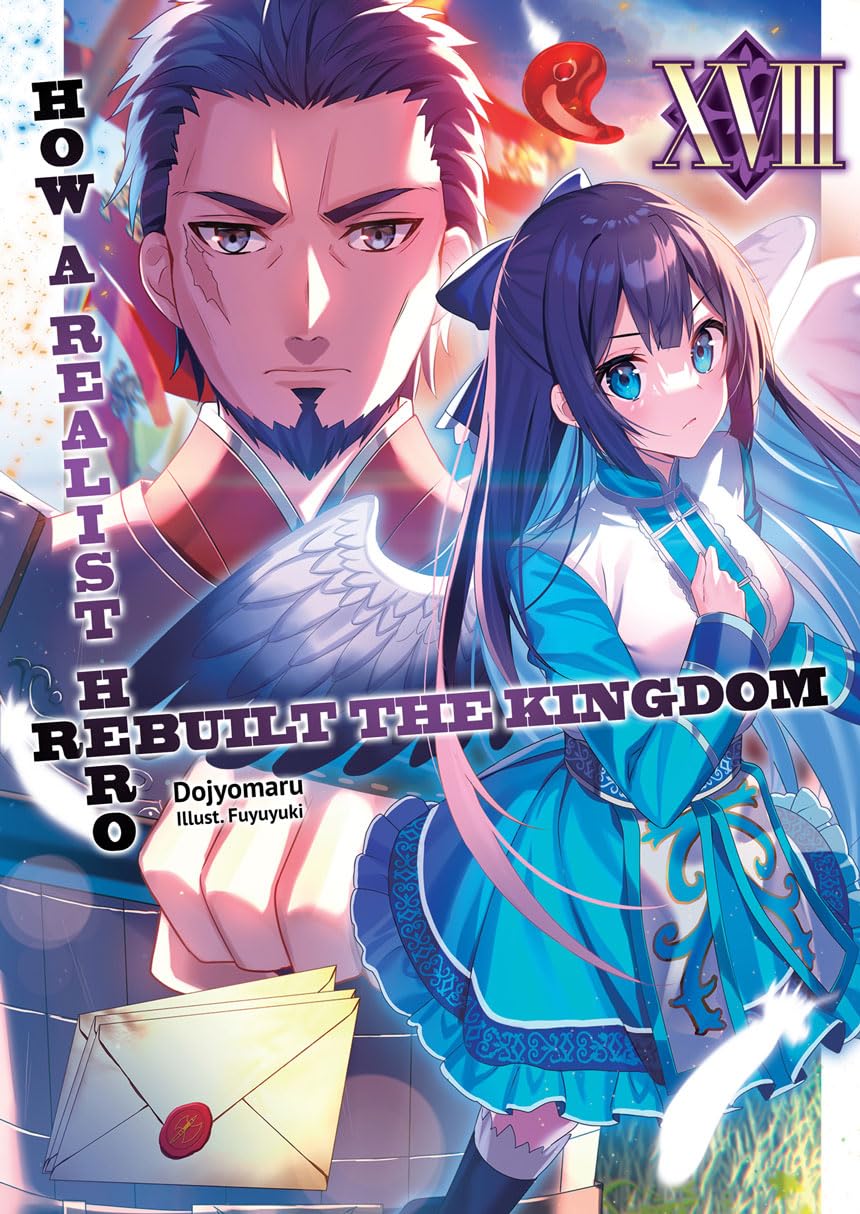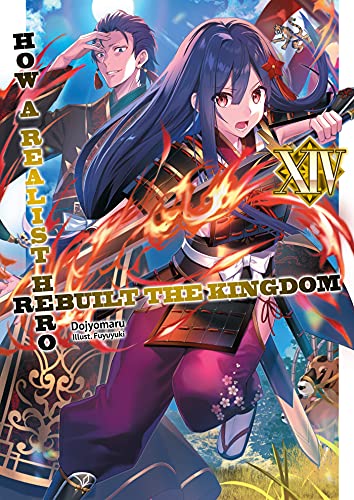By Dojyomaru and Fuyuyuki. Released in Japan as “Genjitsu Shugi Yuusha no Oukoku Saikenki” by Overlap Bunko. Released in North America by J-Novel Club. Translated by Sean McCann.
The Realist Hero books have struggled since the start with having to deal with two types of audiences. The first one has been well-served by all of the Machiavelli stuff, the political worldbuilding and military strategy, and they’re really looking forward to the upcoming major war against Fuuga Haan. And then there’s the regular old light novel audience, who are delighted with Souma having eight wives and seemingly everyone in the entire cast of well over 200 people all having weddings. It can be hard to reconcile the first and second groups, especially since the second group does not really want the logical outcome of a war, which is that many named characters who are married with children will die. In an effort to compromise, this book mostly tries to avoid the war, but does feature two minor characters tragically sacrificing themselves. It’s OK, they’re old men and also single. The marriages are safe.
After all the conflicts of the previous books, along with reluctant alliances, there’s no putting it off any longer: Fuuga wants to conquer the world, and Souma is the one standing in his way, so war it is, despite Yuriga’s best attempts to convince him. Of course, Souma is not going to simply roll out there with troops for an old fashioned Mongol Horde battle. He has schemes. Schemes that involve people like that old guy who warned them about the monster from the sea over a dozen books ago, or utilizing Trill and her bonkers impractical ideas that are nevertheless a bit more practical now that it’s a war. Or breaking the faith of the holy church through the power of evangelical broadcasting. That said… can he actually sacrifice people he cares about?
The book is, for the most part, a tense military thriller, where the question is “what’s the big plan that Souma is getting together?”. It’s supposedly something that would stop the reason for the war existing in the first place, or at least stop those following Fuuga. The answer proves to be pretty clever, and utilizes everything we’ve seen in the last couple of books, as well as the initial conflict that Souma was first isekai’d in order to solve. I ha to laugh when I saw Juno and company at the climax – I knew the adventuring party had to be part of the big final battle, but they weren’t in any of the war parties, and honestly don’t seem like the type, so they had to be part of Souma’s solution. He’s hearts-and-minding Fuuga’s army, and it works really well.
How well we’ll have to wait and see. But at least we have an end volume now – the author says 20 will be the last. I’m sure he can marry off one or two more single people by then, and probably not kill off anyone that would make us sad.














